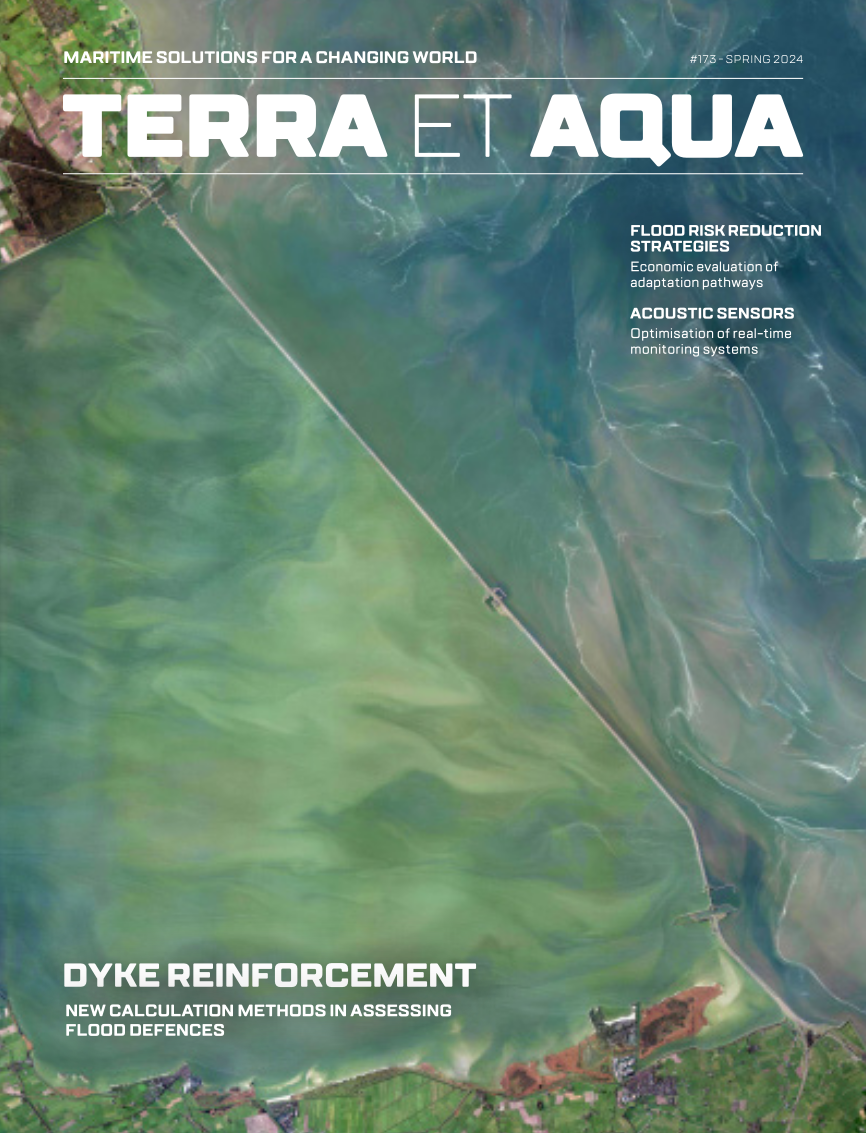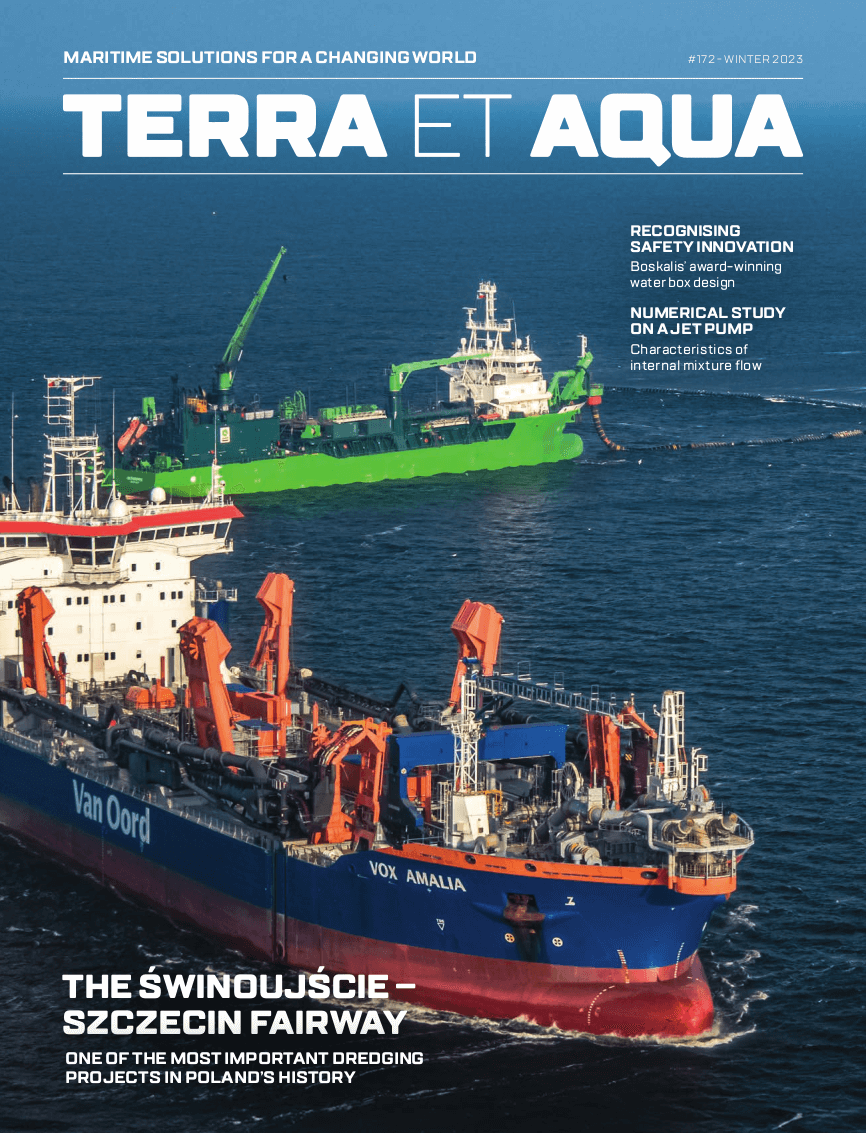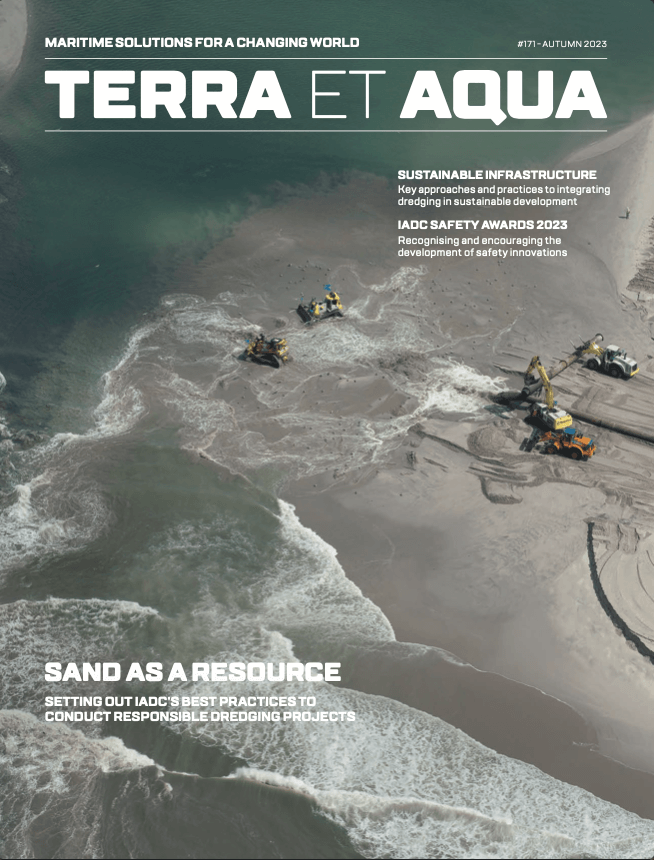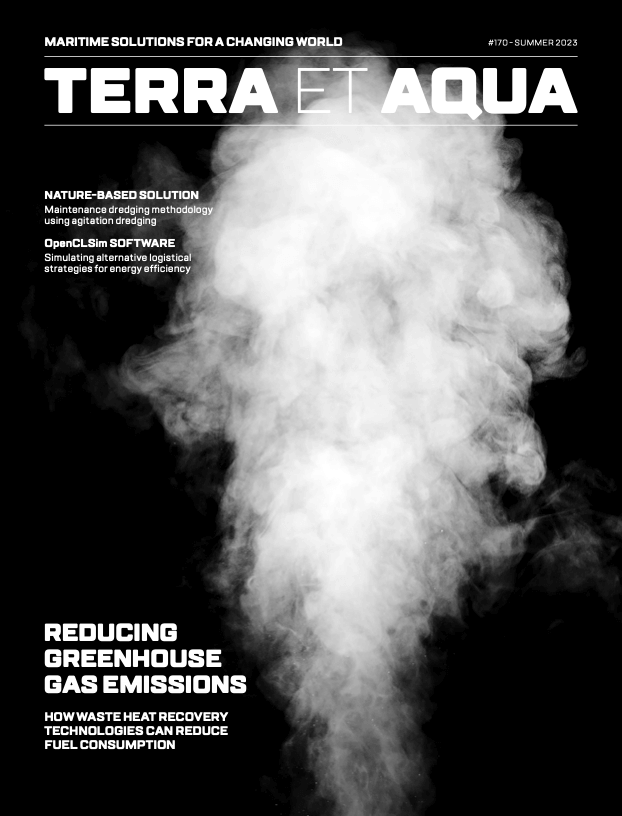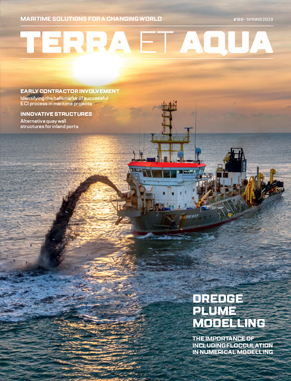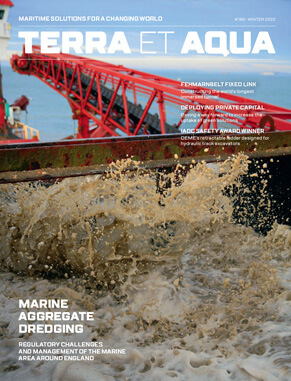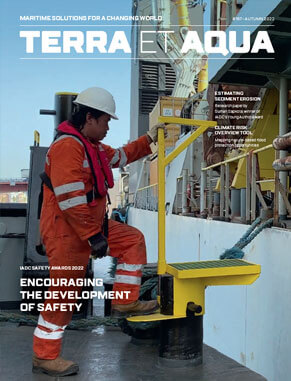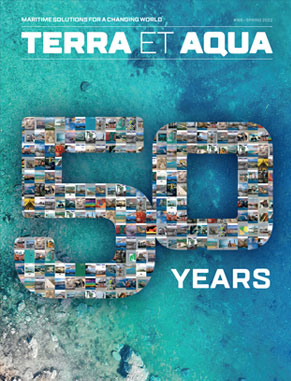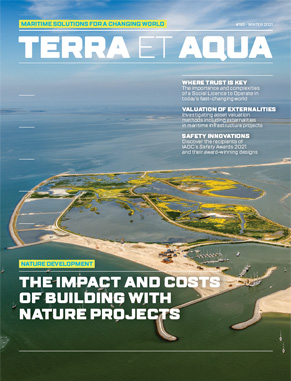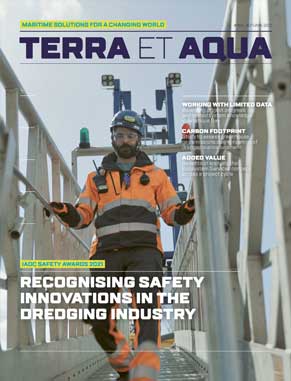Read the complete issue containing articles, upcoming events, an interview and book review.
As IADC celebrates 50 years of its quarterly journal, it seemed only fitting to speak to its longest standing editor, Marsha Cohen, who stood at the helm of Terra et Aqua for 25 years. We caught up with her at her home in Florida to talk about the highs, the lows and a good dose of serendipity.
This article reviews various court cases over the past 50 years and considers their influence on marine infrastructure contracts and the allocation of risk between contract parties. The establishment of case law and legal precedent is an ever-evolving process, it being dependent on claimants to put their disputes through the court process to seek the outcome they desire. It is often a long and costly process. The rise of adjudication in various common law jurisdictions and countries means that often disputes are resolved without recourse to the courts and various industry standard contracts have arbitration as the final and binding mechanism to resolve disputes.
It is hard to imagine a time when safety was not deemed important, when Personal Protective Equipment (PPE) was not used and little was done in the way of prevention. A few decades ago, occupational health and safety was not considered as important for the vast majority of companies. Instead, incidents and emergencies were handled as they occurred, as effectively as possible given the limited technology and resources available. Today, those times have changed. This article explores the progress of health and safety in the dredging industry and QHSSE professionals, Ton van de Minkelis and Christophe Leroy share their experiences in building a proactive safety culture.
Each year, at selected conferences, the Conference Paper Committee is asked to recommend a prize winner whose paper makes a significant contribution to the literature on dredging and related fields. Since 1987, IADC has presented 42 Young Author Awards. Curious to see where they are now, we asked previous winners what impact winning the award had on them and their career.
The effect of density waves and slurry dynamics on slurry pipeline flow assurance cannot be predicted with current slurry pipeline design methods. Current methods are based on steady-state assumptions, assuming that the mixture velocity and density are constant in time and in the pipeline. Therefore, using current design methods a dynamically stable pipeline cannot be guaranteed. Furthermore, new experiments in vertical pipelines show that density wave amplification is possible at mixture velocities far above the critical velocity. This article presents a new temporal design method based on 1D Driftflux CFD, which is able to model growing density waves.
During his distinguished career as professor of Coastal Engineering at Delft University of Technology (TU Delft), Kees d’Angremond served as head of Hydraulic and Offshore Engineering, chair of the department of Hydraulic and Geotechnical Engineering, and dean of the faculty of Civil Engineering from 1989 to 2001. Now professor emeritus, he still works as an advisor and independent consultant. We invited Kees to a conversation with Stefan Aarninkhof, professor of Coastal Engineering and chair of the department of Hydraulic Engineering at TU Delft, to talk about their careers in the dredging industry and the role of academia in the industry today.
Frank Verhoeven, President of IADC, shares his thoughts on todays’ issues related to the dredging industry and introduces the articles in this issue of Terra et Aqua.


